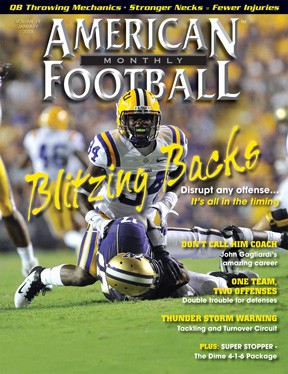Article CategoriesAFM Magazine
|
Thunder Storm – Trine University’s tackling and turnover circuit covers all the essentials of effective defense.by: Trine University Football Defensive Staff© More from this issue There is little doubt that great tackling and creating turnovers are the two most important things a defense can do to help its team win. We have employed a tackle and turnover circuit that we believe not only teaches our players to tackle with great technique, but also teaches an understanding of how to create turnovers when given the opportunity. As a result, we have been at or very near the top of the turnover margin statistics for our conference over the past few years. We led all of Division III in turnover margin in 2010 at plus 1.92 per game while collecting a school record 38 turnovers in twelve games. During our pre-season camp, we use this circuit for 18 minutes (six, 3-minute segments) every practice. During the season, we will spend 15 minutes (6, 2.5 minute segments) a week completing the same circuit. We ....The full article can only be seen by subscribers.
|
|
|||||||
| HOME |
MAGAZINE |
SUBSCRIBE | ONLINE COLUMNISTS | COACHING VIDEOS |
Copyright 2025, AmericanFootballMonthly.com
All Rights Reserved





